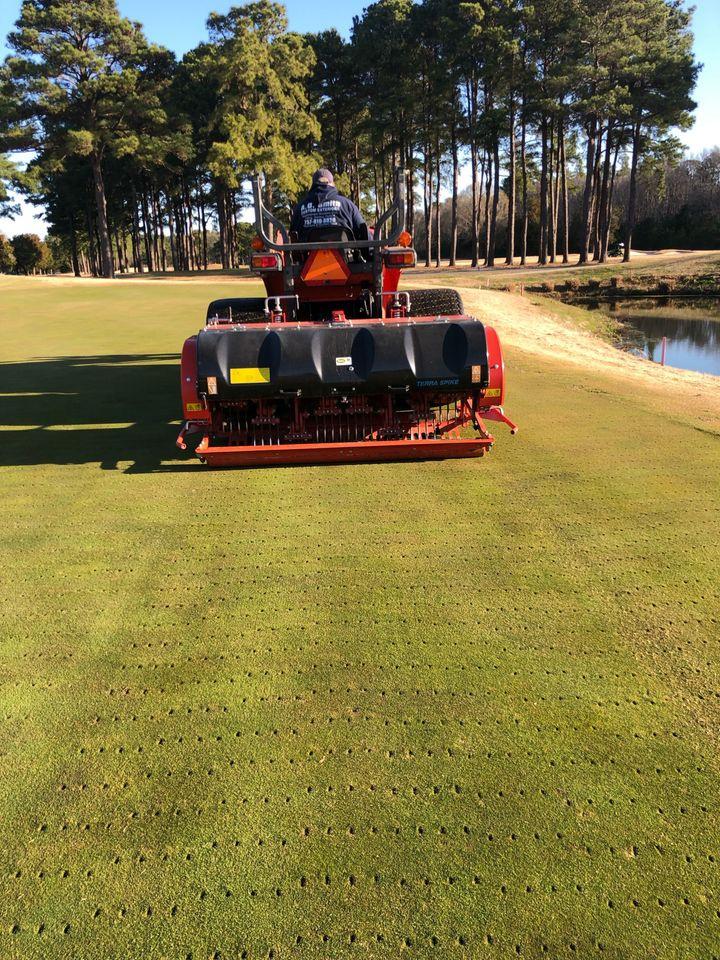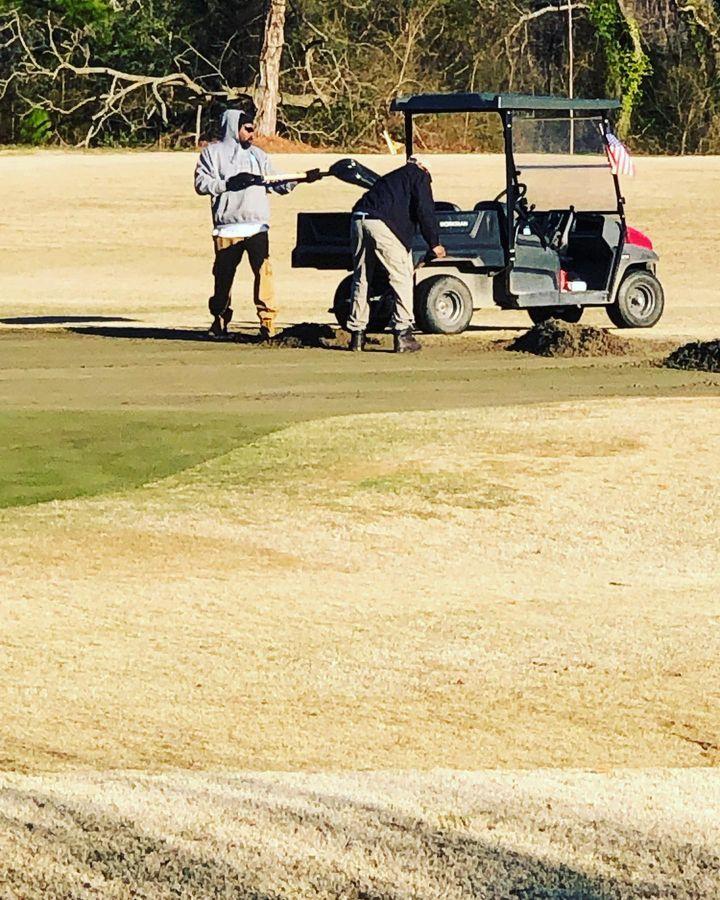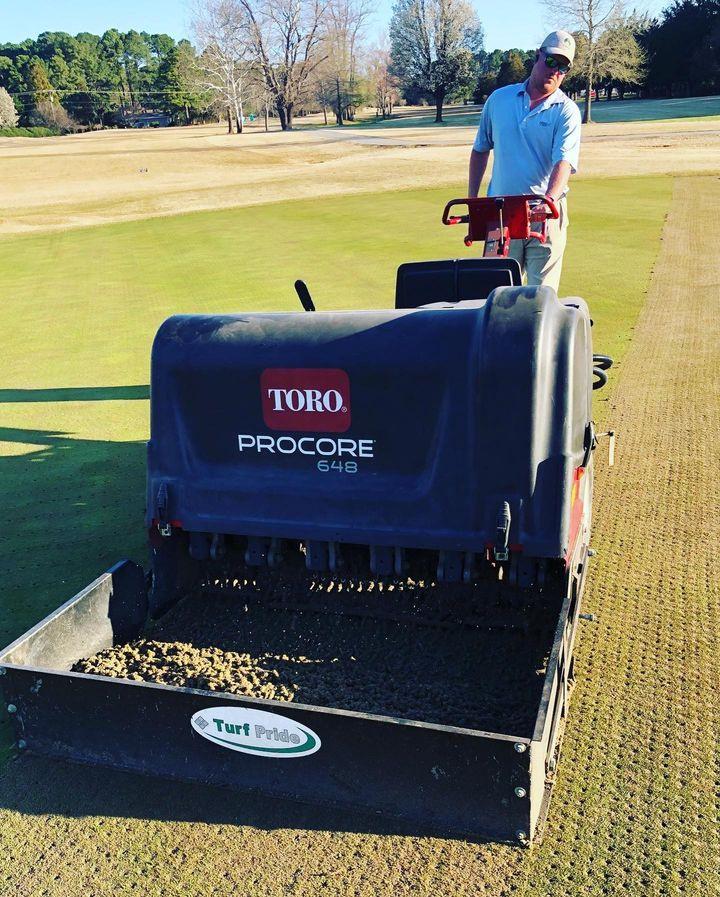
2 minute read
TURF TALK
BY PETE STEPHENS, CGCS
It is that time of year again when preventative turf maintenance is an integral part of successful golf course management The golf course will be closed March 20th and 21st for aerification and topdressing of all greens.
Advertisement

Many Golfers view aerification as an inconvenience, as it closes the course and that takes the greens out of play for a couple of days, pulling cores from the greens and leaving holes that can affect putting for many days before healing. But, I assure you it is important to understand how important aerification is to produce healthy resilient turf. This process is a short-term disruption with long-term benefits for the course When you see a green that has been aerified, you will know that the club cares about keeping the turf healthy and playable Aerification achieves three important objectives
·It fractures and relieves soil compaction
·It provides a method to improve the soil mixture for the turf roots to grow and find available nutrients
It reduces and prevents the accumulation of excess thatch
Like so many things, the quality of a good putting green is more than skin deep. In fact, the condition of a green has a lot to do with what goes on below the surface. For grass to grow at 1/8-inchor less, it must have deep, healthy roots Good roots demand oxygen In good soil, they get oxygen from tiny pockets of air trapped between soil and sand particles
The traffic from golfers’ feet (as well as mowing equipment and even rain) tends to compact the soil in the putting green. When soil becomes compacted, the air pockets on which the roots depend and the roots are essentially suffocating Without oxygen, the grass plants become weak and will eventually wither and die
With aerification, there is improved air space in the soil, promoting deeper rooting and resurgence of root growth, thus helping the grass plants stay healthy The spaces are then filled with sand “topdressing” which helps the soil retain air space and makes it easier for roots to grow

ICYCC has greens of different ages- the older greens are constructed of soils with significant amounts of silt, clay and fine organic particles that are prone to compa Filling aerification holes with sand improves drainage and resists compaction. The introduction of sand to a green ’ s top layer can over time, which postpone expensiv rebuilding or renovation of greens
Finally, as turf grows every season it produces a thatch layer (an accumulation of d stems, leaves and roots) at the surface. As oxygen and water are introduced into th the thatch decomposes it becomes organic matter. A little organic matter makes fo healthy and resilient green, but too much invites diseases and insects Topdressing sand can help to prevent thatch buildup, and aerification is one of the best ways to an existing layer and prevent an excess of thatch from becoming established
ICYCC has a few types of aerifying machines with different attachments to address problems in the various stages of life of the turf So, the next time you ’ re frustrate the aerifiers are brought on the course, remember that a little preventative mainte produces the best turf over the long haul. We thank you very much for your patien work diligently to continually improve the playing conditions on the course





